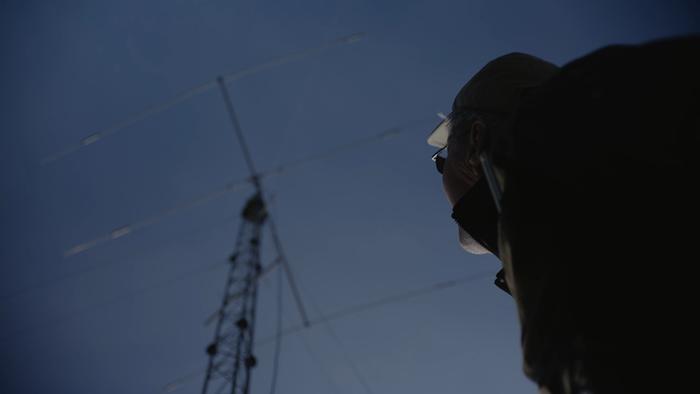
Hello? Metode calling!
LIAF is on the line.

Still from 'On Air' by Astrid Ardagh (2024)
Hello? Metode calling!
LIAF is on the line.
In a conversation between Metode participant Alena Beth Rieger and her collaborators Jumana Manna and Drew Snyder, Manna reflects on her method for developing her artwork Substitute for the new Government Quarter in Oslo. Her aim is “to think about what it means to be collective in our world today. There’s an embedded critique of pre-planned images. We allowed unexpected elements to enter and change the composition and bring a dynamicism that wouldn’t be possible if everything was predetermined.”1
In Metode Volume 3, titled “Currents,” writers and artists engage in an exploration of how signals can traverse the vast expanse of space and time, forging pathways to what has yet to manifest. The starting point for “Currents” was Kjersti Solbakken’s curatorial approach to use LIAF as a platform to take a closer look at local stories, archives, collections, and conditions that can help uncover our recent history. The volume was introduced by three essays by Alison Burstein (USA), You Nakai (Japan), and Sigbjørn Skåden (Sápmi and Norway), who situated themselves within close proximity to their local contexts when exploring the more wide-ranging spatial and temporal connections inherent to their inquiries. Languages converged—Norwegian, Sámi, English, Japanese—as did writing styles, encompassing essayistic, academic, science fiction, and creative writing. Together, these three essays provided a foundation for the matters and methods underlying the Open Call for participants.
No less than fifty project proposals were submitted. From these responses, our Editorial Board invited seven groups of contributors to elaborate their projects over the next nine months. During this time, the projects matured; the texts expanded in length, some ideas circulated, some were revised, while others were cut off. Some of them mutated into other projects, far beyond their initial intentions. The collaborative method employed in this co-authored introduction is based on an ongoing dialogue between Kjersti Solbakken and Ingrid Halland. By sending, receiving, and decoding curated fragments—quote by quote—we have made connections that are sometimes strong and sometimes weaker, allowing readers to enter and change the composition.
1 Conversation between Alena Beth Rieger and Jumana Manna, Oslo, 14 June 2024.
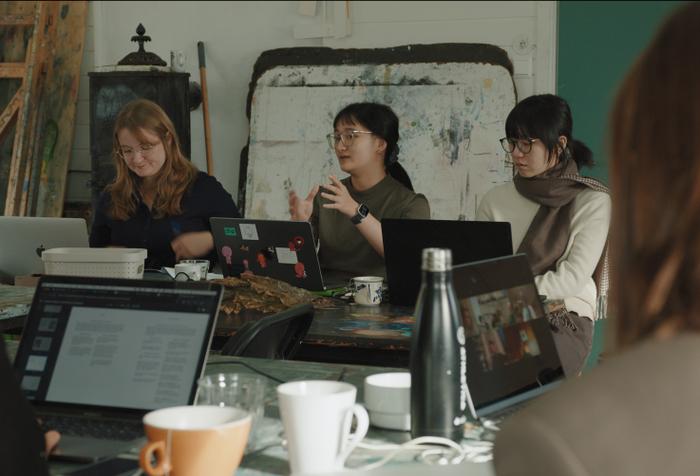
Metode workshop in Lofoten, Norway, September 2024. Photo: Christopher Brautaset
So where do we begin? Perhaps, just like Rieger in her contribution to this volume, we start at the end. And perhaps, like the participants Åsne Kummeneje Mellem, Tarja Salmela, and Gyrid Øyen, we start from the proximity of our own experiences.
.
Kjersti Solbakken:
-
My work with Lofoten International Art Festival (LIAF) 2024, entitled SPARKS, and the history of telegraphy and the Lofoten Line has transformed my vision. In every town and village I’ve visited, I’ve been on the lookout for the telegraph building. The people I’ve met have generously shared their knowledge with me. In Kirkenes, for instance, I learned that the old telegraph building for years served as the Russian Consulate General. Right in the middle of town, that building, designed by the architects Blakstad and Munthe-Kaas, now stands empty, as a monument to broken communication lines. Looking back now, a few months after LIAF, it’s hard to grasp how the history of the telegraph, with its sea cables and landlines, and the development of wireless radio communication would become a topic that raises so many urgent geopolitical questions. In recent news articles, we read how large-scale GPS disturbances are affecting air traffic in East Finnmark, and terms like spoofing and jamming are starting to feel all too familiar. Just days before LIAF opened, hidden explosive devices in thousands of pagers and handheld radios–walkie-talkies–detonated, causing mass explosions across Lebanon and Syria. The attacks on undersea cables highlight the vulnerability of both our infrastructure and our relationships.
Astrid Ardagh’s film On Air, which premiered at LIAF 2024, portrays a group of retired telegraphists from one of Norway’s meteorological stations. For over 30 years, this group has stayed in touch via radio and Morse code. The film recounts how satellite connections to the islands of Bjørnøya and Hopen were cut on the same day that news broke of Russia’s invasion of Ukraine. However, the group successfully established an emergency communication service between the islands and mainland Norway by using their analog radio transmitters.
If the one-to-many model of broadcasting isn’t working, how can we turn things around and create alternative communication models? How do we build our own infrastructure to connect across distribution lines that have been seriously damaged or even cut?
-
As part of LIAF’s opening weekend in September 2024, a workshop was held for all “Currents” participants in Lofoten, Norway, where we aimed to identify common matters and methods. Over three intensive days, we collectively engaged in the physical labor of writing. In the workshops, we grappled with recurring questions: What does it entail to write about, present, or reenact attempts and experiments, even those that have failed, within a new time and context? How do we engage with in-process research, unpublished manuscripts, and archival material that does not yet fully constitute an established archive? How do we navigate what is truly undone?
The matters explored in this volume circulate and evolve through diverse locations and historical periods: Lerwick, Shetland, in the 1970s; Walvis Bay, Namibia, in the 1940s; Olggosvuotna/Moskivuono/Ullsfjord in 2024; Nyksund and Berlin, in the 1980s; Mauritsstad (now Recife), Brazil, in the 1640s; Elverum, Norway, in the 1980s; and wires connecting New York City, Lofoten, and China. Tangible matters—including wool, wires, lumber, landscape paintings, theater costumes, and archival boxes—are intricately linked to intangible heritage such as weaving practices, auditory experiences within museums, and the ambient resonance generated by signal-carrying feedback cables.
Despite originating from diverse practices and theoretical backgrounds such as fine arts, film studies, sound art, literature, cultural theory, media theory, culture-based service design, architecture, and museology, a unified approach emerged as the work developed: the method of proximity. Each author began their exploration from a point of familiarity, from their local contexts, their memories, or more recent fieldwork, investigating matters closely related to their experiences. What emerged through the writing process was a reconfigured relationship between what is close and what is far.
In her book The Writing Life (1989), American author Annie Dillard describes her own writing process, explaining how she needs more than just a pen and paper to write. She outlines the physical labor of laying out papers across a large floor: “You walk along the rows; you weed bits, move bits, and dig out bits, bent over the rows with full hands like a gardener. After a couple of hours, you have taken an exceedingly dull nine-mile hike. You go home and soak your feet.”1
This volume of Metode signals the culmination of the 2024 edition of LIAF, serving as both a coda and an initiation of new dialogues. The “Currents” essays expand the biennale format beyond the confines of the event itself. Unexpected elements enter and change the composition.
1 Annie Dillard, The Writing Life (New York: Harper & Row, 1989), p. 46.
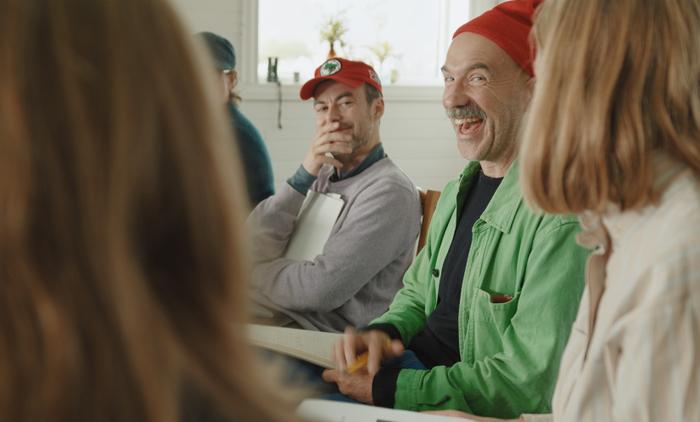
Metode workshop in Lofoten, Norway, September 2024. Photo: Christopher Brautaset
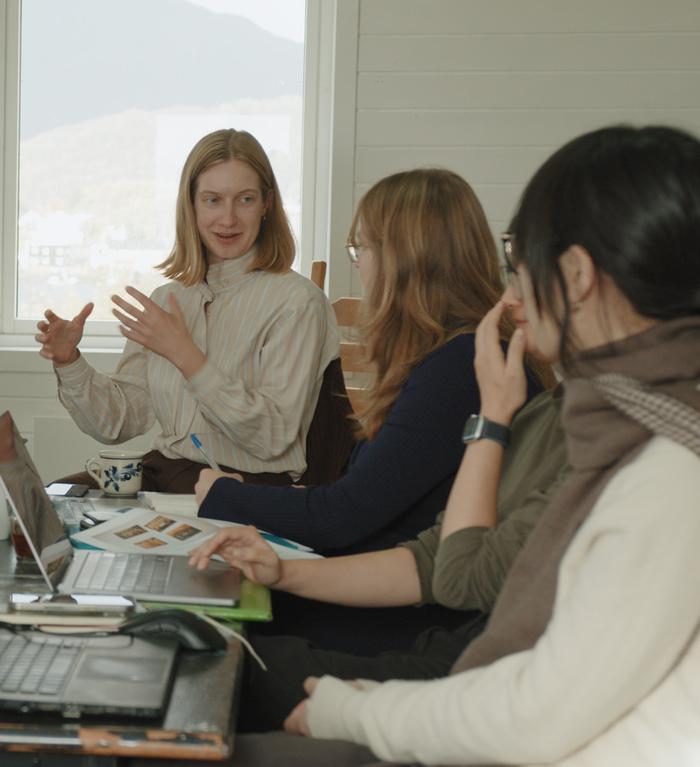
.
“The detail is only a detail because of what it implies about the rest—or what it sucks into itself, from the surrounding whole.”
Brian Dillon, Essayism (2017)
.
Metode participant Sol Archer cites art historian Michael Gaudio, who, in turn, references art historian Angela Vanhaelen, who highlights that viewers of Dutch paintings often find themselves at “boredom’s threshold.” In his book Sound, Image, Silence (2019), Gaudio critiques the Austrian art historian Alois Riegl (1858–1905) by noting that these Dutch landscape paintings
.
“… produce that distanced and calm attentiveness that was for Riegl the proper mood of modern aesthetic experience. [The Dutch] landscapes push this kind of viewing, which Riegl called “distant vision” (Fernsicht), to its limits by removing nearly all of those small but distracting signs of activity.”1
.
In his essay, Archer describes how the Brazilian landscape paintings by Dutch painter Frans Post (1612–1680) push this notion of viewing—distant vision (German Fernsicht by Riegl, and fjernsyn in Norwegian)—to its limits by stripping away nearly all signs of activity. In Archer’s words: “As such, paintings of the high period of Dutch landscapes are conspicuously silent, static, conspicuously without action, the land is the story, what happens on it a footnote.”
In contrast, the authors featured in “Currents” embrace an alternate form of distance in their writing. Rather than pursuing Riegl’s distant vision, which tends to obscure the small, yet significant details of life, our authors zoom out in both time and space by remaining up close to those very details. Within this framework, the elements do not lead to boredom, due to a lack of events; instead, the essays in “Currents” are situated at “boredom’s threshold” because too much occurs, creating a desire for an abundance of nuanced details and sometimes noisy distractions. We believe that embracing these intricacies of proximity—detours, errors, and disconnections—enriches the narrative and should be integral to the practice of writing from a distance.
This practice can be understood as the concurrency method, that is, as a modus of our current aesthetic experience, where zooming in on limited details concurrently entails zooming out on global consequences. Here, the interplay between global distances and local proximities echoes the functionality of a wireless telegraph line, transmitting ideas and experiences in real-time and connecting the nuances of local matters with expansive worldly effects. Like the telegraph line, this mode of aesthetic experience modifies scales—an utmost dependency between the minuscule and the monumental, the near and the far.
Yet if to zoom in means to zoom out then such a concurrent scale—both temporal and spatial—requires intentional acts of attention. The manner of beginning close and insisting on remaining close to local heritage, specific sites, and experiences seemingly indicates having to overcome limitations, gaps, and distances.
In the early 20th century, radio wave signals from the Lofoten Telegraph Line were transmitted over distances once deemed impossible, yet these signals still encountered limitations. Weather, errors, and noise can weaken reception, sometimes leading to complete cut-offs. The writers in this volume pay close attention to the constraints of their transmissions, including both their personal capabilities and the capacity of their work to fully capture the stories they convey. Instead of allowing these limits to cause withdrawal, the authors navigate within and among these challenges, seeking corridors through their constraints. In order to begin from close and maintain that proximity, the “Currents” authors have developed an ethical and aesthetic modus for working into, onto, and with limitations, fragments, noise, and cut-offs.
Although all ten individual essays in “Currents” focus on hyper-local contexts, exploring intricate details, situated phenomena, and specific sites, the overarching context defines another layer of significance. Similar to telegraphic signals transmitted through the air, this surrounding context often remains inconspicuous—barely discernible unless one takes the time to carefully decode its connections.
1 Angela Vanhaelen quoted in Michael Gaudio, Sound, Image, Silence: Art and the Aural Imagination in the Atlantic World (Minneapolis: University of Minnesota Press, 2019), 40.
Ingrid Halland:
My work with Metode has transformed my approach to research and collaboration. In every project, I now actively seek out overlooked elements: inconspicuous phenomena, invisible matters, opaqueness, and collaborations with seemingly marginal institutions, as well as underappreciated research fields and artistic practices that operate off the beaten path. The people I’ve met through Metode have generously shared their knowledge and time with me, resulting in mutual learning experiences. Andreas Ervik, for instance, taught me to always be on the lookout for small, overgrown old plots in the middle of cities. Júlia Ayerbe transformed my perception of bathrooms into utopian spaces. Another participant offered valuable feedback regarding how I often plan intensive workshop schedules without enough breaks. He taught me that breaks nurture thoughts.
In my introduction to Part I of “Currents,” called “Attention,” I explored the term “feedback,” commonly found in computational, music, media discourse, and academic journals, and traced its roots to fragments within biology. I referenced how biologist Conrad Waddington articulated the conditions under which mutations occur. He pointed out that a biological system must maintain a degree of resilience and stability, yet for mutations to arise, it must also embrace risk; it is at the threshold of failure or catastrophe that such systems become most receptive to change. In essence, a biological system needs to welcome weakness to facilitate mutation. The feedback that we are receiving when working with Metode, is neither coming from afar nor from a wide audience. We have a limited readership. However, the feedback exchanged within Metode is grounded in generosity and vulnerability, allowing weaknesses to be present in our work.
.
Beyond mere interdisciplinary engagements and cross-disciplinary or trans-disciplinary approaches, Metode’s method of long-term engagements based on vulnerability have, echoing Manna’s words, allowed unexpected elements to enter and change our approaches. When thinking together, embracing limitations, desiring risks, and working with weaknesses, something evolves in our methods over time.
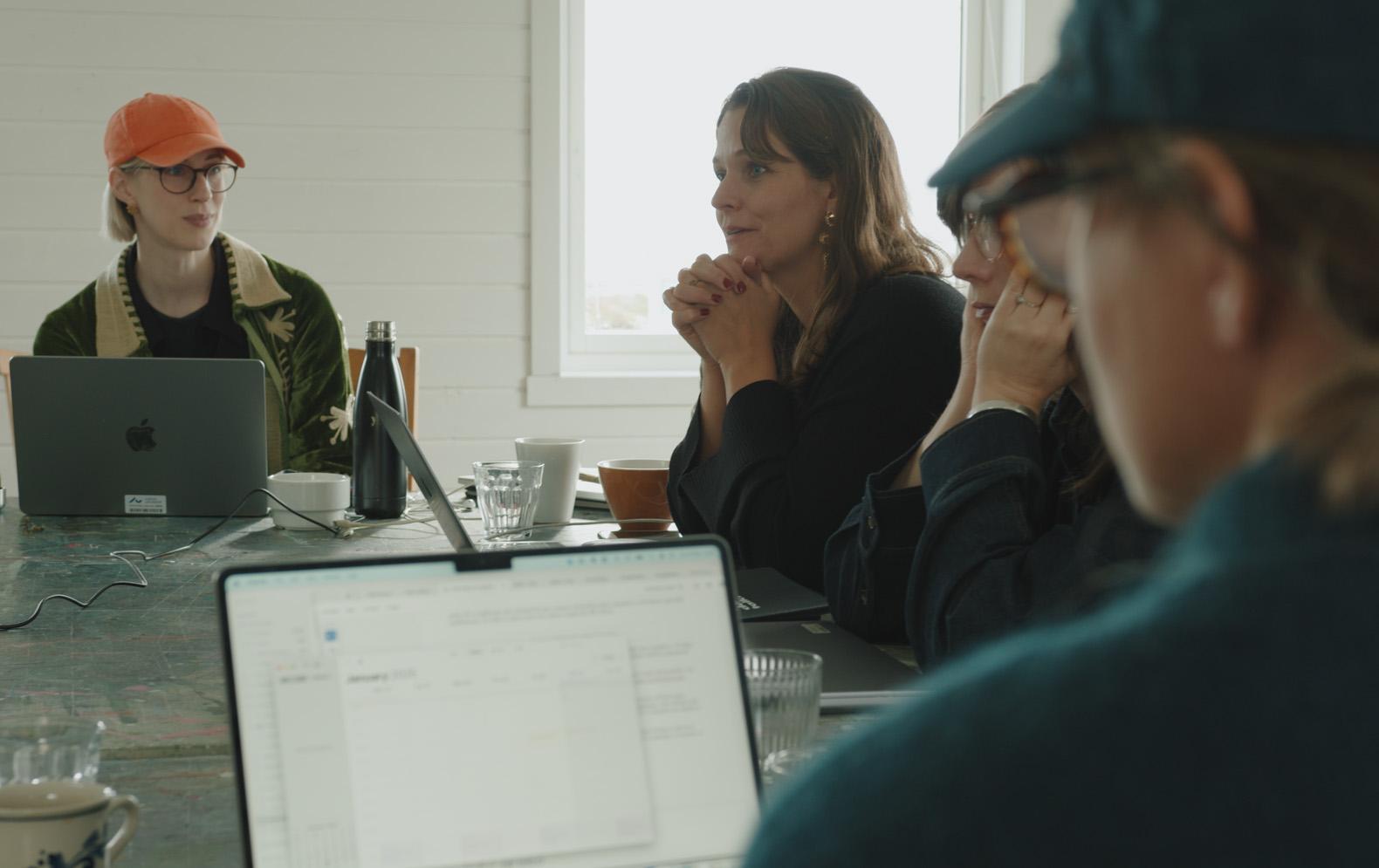
Metode workshop in Lofoten, Norway, September 2024. Photo: Christopher Brautaset
Over the course of nine months, the “Currents” participants have engaged in a series of workshops, providing in-depth feedback on one another’s ideas, texts, and drafts—dialoguing with the Editorial Board, alongside invited scholars and artists. All seven essays are crafted with what participant Elisabeth Brun characterizes as a “dialogical ambition that explores a layering of time that is not linear.” In several of these essays, this ambition takes on a formal dimension. Architect Ian Callender, sound artist Yueyang Luo, and media scholar Ann Wang have co-written an essay about wires that circulates and connects theoretical perspectives while examining the potential of wires to link artistic practice and theory. The essay is structured as three distinct columns—authored by each contributor—that can be read both vertically and horizontally, with the feedback between the three authors formally manifesting. This format occasionally leads to confusion but can yield unexpected dynamicism: “It is a delight to read across the columns and to explore meanings in between; a lovely experience for someone like me who tends to ‘think sideways,’” as Brun remarked in a workshop.
Participant Tarja Tuulia Salmela describes how Alena Beth Rieger’s essay twists a linear historical narrative, enabling history to manifest in fragments. This fragmentation is accentuated by the structure of Rieger’s essay, which guides the reader through cyclical processes of extraction, accumulation, and expulsion at a site of profound historical significance: Akersgata 44 in Oslo. This location was known as the Empire Quarter from 1807 to 1954 (so named for its Empire-style architecture), was rebuilt and served as the Government Quarter from 1954 to 2020, and is now the site of the New Government Quarter, currently under construction, and Jumana Manna’s artwork Substitute. In her essay “Extract, Accumulate, Expel (repeat)”, Rieger underlines how her Metode contribution “looks backward to detail its history of leftovers—challenging beginnings and endings as explicit moments.”
In our Open Call, we posed the question: “How can signals be transmitted from afar in a manner that transcends not only space but also time?” Through our collective inquiry, we have arrived at the understanding that signals can overcome the confines of time by embracing their limitations.
Within computation cybernetics, an error is defined as an unexpected mistake causing a deviation in the system. In more recent times, a software error entails unexpected crashes or the sudden termination of a computer program. The word derives from the Latin noun error, which means “a wandering, straying, a going astray; meandering; doubt, uncertainty.”1 Following a computational error or a disruption in transmission, the signal may reconnect, but the message will be delayed.
While probably not yielding immediate citations or clicks, the essays in Metode contribute to a slower, more reflective form of knowledge production whose impact might traverse vast distances—be they geographical, temporal, or experiential—by taking the time to contemplate, reevaluate, reject, and regenerate, as well as for attuning oneself to the nuances of the message; then, methods might mutate.
The idea of collaboration between LIAF and Metode gradually took shape by allowing the necessary time to dictate the format, rather than the other way around, stretching its reflective foundation into a redirected, concurrent process. While these signals may not provoke an immediate impact, enduring collaborative processes nurture trust and cultivate lasting relationships, latently drawing what is distant a little closer. Instead of ending, we will look onward, toward new sparks and collaborations. Stay tuned for the circulation of the Open Call for Metode Vol. 4, “Exhibition as Method.”
1 Online Etymology Dictionary, “Error”: https://www.etymonline.com/word/error (accessed 19 January 2025).